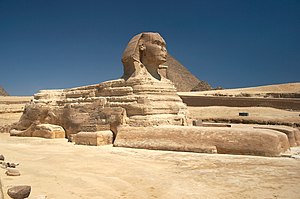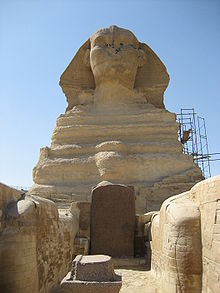Giovanni Battista Caviglia
This article needs additional citations for verification. (January 2016) |

Giovanni Battista Caviglia (1770 in
Early life
He was born in
Career in Egypt
When he decided to start his career as an explorer, he left his ship moored in Alexandria and offered his services to various collectors. Most of his excavations were carried out on behalf of the British Consul General Henry Salt.
Between 1816 and 1817, he explored the Great Pyramid of Giza where he made important discoveries, including the descending corridor, the bottom of the well service and unfinished underground room.


In 1817, Salt hired him to excavate the Great Sphinx at Giza, which over the centuries had been almost totally covered by the desert sand.
The last dig around the Sphinx had been carried out in 160 AD by order of the Roman Emperor Marcus Aurelius. As the excavations continued under Caviglia, he came upon an array of ancient Egyptian artifacts and inscriptions in Greek and Latin.
In 1819, he had to suspend his research.
During excavations carried out in 1820 on behalf of the British in the ancient capital of
Following this, the pasha of Egypt Mehmet Ali gave it to the British Museum in London, which in turn declined the offer for the same reasons. A museum was then built over the statue where you can still find it today.[4]
In 1835, when he was already 65 years old, the British Egyptologists
Later life and death
Caviglia spent the last years of his life in Paris, where he died on 7 September 1845.
Notes
- ^ ISBN 978-977-416-599-3.
- ^ a b "Early Travelers and Explorers to the Pyramids, Part II". Egypt Tour. 2010.
- ^ "IL GRANDE BELZONI DI MARCO ZATTERIN". CoaloaLAB. Archived from the original on 25 January 2010.
- ^ "Colossus of Ramesses II". Egypt Tour. 2010.
